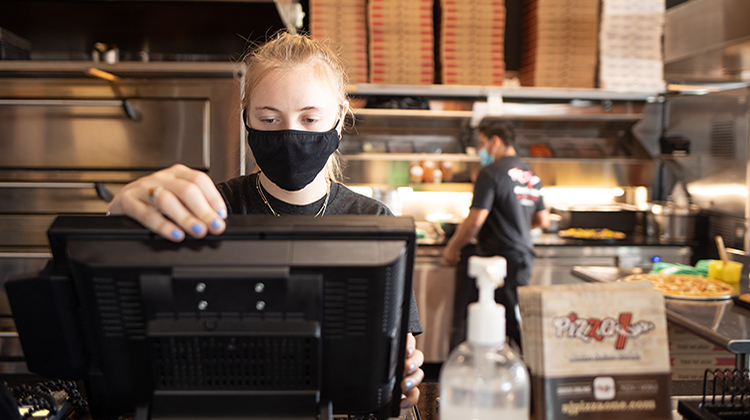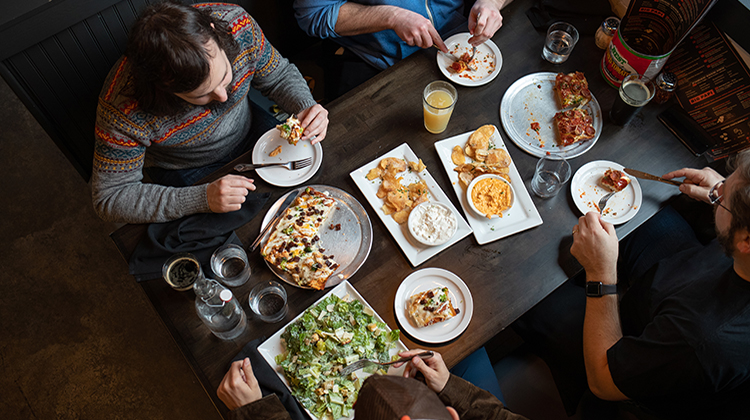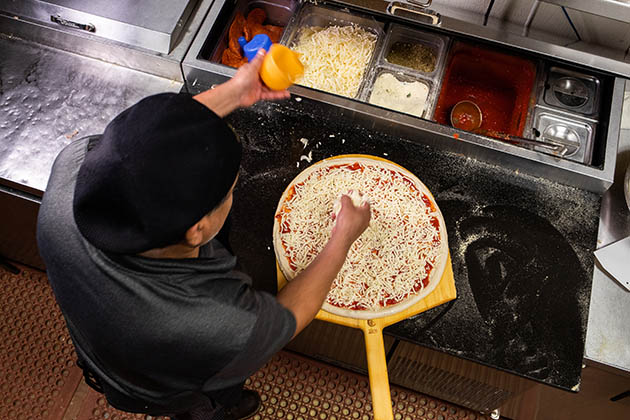A chain only works if every link is doing its part. This is especially true when considering the supply chain for businesses, which is causing worldwide shortages. These have been increasing over time and don’t look to be resolved anytime soon. Let’s examine some of the issues.
Why is this happening?
- Manufacturing and processing plants are still lacking the employees to do the actual processing — even if there isn’t a shortage of source materials or ingredients. There is also a shortage of truck drivers, making transportation of goods a problem. (FSR Magazine, October 2021)
- Weather is more of a factor than usual. Droughts, wildfires and heatwaves have affected crops, causing the spring wheat forecast to drop 41% from 2020.1 Tomato crops are also down due to tropical storms on the east coast and drought on the west coast — 4.3% below the May 2021 forecast.2
- Containers and bottles have experienced inventory shortages, causing packaging issues for many manufacturers. Shipping for glass bottles is also a factor since 20-30% of the bottles are imported from Europe or Asia.3 Traffic jams at large US ports will likely not resolve until mid-2022, according to Goldman Sachs economists.
- The raw materials needed to create corrugated boxes (including pizza boxes) are also in high demand due to an increase in e-commerce, causing the corrugated box manufacturers to struggle to meet demand as the prices for cardboard continue to go up. In February of 2021, the price of cardboard reached a record high.4
What does it all add up to?
These shortfalls can translate to increased operation costs and lowered profits for independent operators who do not adjust to navigate these challenges. The supply chain issues have also rapidly increased wholesale food costs — the fastest rate in seven years.5
Labor also continues to be a problem across the ecosystem. Despite consistent growth over a 7-month period (January – July 2021) restaurants were still below pre-pandemic levels by nearly 1 million jobs.5 These shortages reduce how many customers you can serve, impacting your sales.
What you can do differently to offset shortages.
Streamline your menu
Reducing menu items with significant product supply issues or high-cost ingredients can help ensure that you are able to serve your customers the items you have listed while maintaining a menu that is profitable to your pizzeria.
Utilize QR Codes
Speaking of menus, now is a good time to embrace QR codes at your tables and on your direct mail that link to your online menu. This will offer you flexibility to change prices and menu items online in case there is a product shortage or unexpected surge in pricing due to the supply chain.
If you haven’t reviewed your menu prices recently to ensure that your items are still priced to maximize profits, now is the time to do so. The Grande Cheese App is a great tool for calculating recommended menu prices based on your target food cost percentage. Click here to learn more.
Maximize ingredient potential
Identify your most reliably supplied products and figure out how to use them more broadly. For example, if you have a good supply of roasted red peppers, use them in pizzas, salads and appetizers or wherever else it makes sense.
Get creative with ingredients
Purchasing available ingredients that uphold your quality and flavor may be a temporary solution for short-term shortages. If you can’t get chicken breast, consider chicken tenders. For vegetables, instead of fresh, you might consider vegetables that were flash frozen right after harvest.
Offer more LTOs
Because the product supply is not as reliable, consider adding LTO offerings or changing up your menu more frequently based on supply. As a bonus, your pizzeria can engage with more followers on social media by communicating your latest special. Find tips for executing a successful LTO in our blog post, 5 Steps to Plan & Execute a Successful LTO.
Keep customers in the loop
For the most part, customers are understanding of the times we live in. Let them know about the supply issue and apologize for any inconvenience if the menu item they came to order is not available at this time. If you know that a popular, top-selling menu item isn’t currently available, you may want to proactively communicate with your customers through your website, social media and other platforms to avoid disappointing them when they get to your shop. You may even want to consider offering a gesture, like a discount for the item when it is back on your menu.
Stay the course
The effects of product supply are not unique to the food service industry and will be felt worldwide for years to come. Try any of the tactics above to mitigate the short supply. Or reach out to your Grande Sales Associate to see if they can assist you. It may be a while before we get back to normal, but as usual, pizzerias find ways to pivot and thrive. Keep making what got you here in the first place…high quality pizza.
For more information on labor help, including training, hiring and more, use Grande’s Labor Solutions Toolkit.












